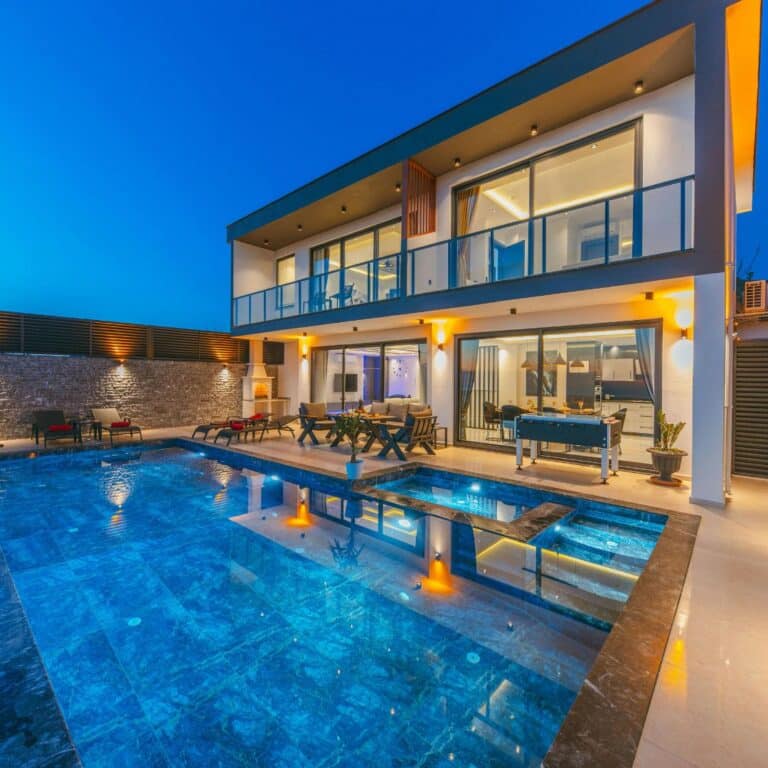The morning air smells like fresh coffee and sage. Sunlight spills through oversized windows, casting golden streaks across polished wood. A woman sits in a plush leather armchair, sipping tea. Her journal rests open beside her. Soft instrumental music plays in the background. This is luxury sober living—calm, private, and welcoming.
Across town, the scent of bleach clings to the air in a shared dorm. Metal bunk beds creak as bodies shift in sleep. A man pulls a thin blanket tighter around him, bracing against the morning chill. The fluorescent lights will flicker on soon. His alarm will blare, signaling another structured day in the halfway house. The schedule is strict, the beds are shared, and privacy is scarce.
Both places help people stay sober. But they are not the same. One provides the basics: shelter, structure, and rules. The other offers more: comfort, space, and high-end support.
Let’s break it down.
What Is Luxury Sober Living?
A luxury sober living home offers a different experience. Think private rooms, high-end amenities, and personalized support. These homes cater to people who want sobriety and comfort.
Instead of shared dorms, residents get private or semi-private rooms. Instead of basic meals, they enjoy chef-prepared dishes. Instead of state-funded programs, they access therapy, wellness activities, and career coaching. The environment feels more like a wellness retreat than a recovery facility. Residents wake up to fresh linens, personalized treatment plans, and access to top-tier professionals.
Luxury sober homes focus on long-term success. They build routines, create stability, and offer more privacy than a halfway house. Days include guided meditation, personal training, and one-on-one therapy. Nights end with group reflection by a fire pit or a relaxing soak in a private tub. Every detail makes recovery sustainable, comfortable, and deeply personal.
What Is a Halfway House?
A halfway house is a place for people leaving rehab, jail, or a tough situation. It gives them a place to stay while they work on sobriety, mental health, or life skills.
It’s not fancy. Most have shared rooms, strict rules, and required programs. Some people there are court-ordered. Others come from rehab and need a transition space. The setup is simple—bunk beds, communal spaces, and scheduled meals. Resources vary, but many halfway houses run on limited funding, so amenities are minimal.
Rules matter. Residents must attend meetings, take drug tests, and follow curfews. Staff supervises daily life. The goal is to prepare people for independent living. Slip-ups bring consequences. Some houses use a zero-tolerance policy, meaning one mistake leads to eviction. Others allow second chances but impose stricter rules. Success depends on discipline, routine, and support from peers who share similar struggles.
Key Differences Between Halfway Houses and Luxury Sober Living
Both options provide structure, but the experience differs. Here’s how:
- Who Lives There?
- Halfway House: People from rehab, jail, or court programs. Some stay because it’s their only option.
- Luxury Sober Living: People who choose to invest in recovery with extra comfort and support.
- Housing Setup
- Halfway House: Shared rooms, basic furniture, and cafeteria-style meals.
- Luxury Sober Living: Private or semi-private rooms, upscale furniture, and chef-prepared meals.
- Supervision and Rules
- Halfway House: Staff enforces rules. Drug tests, curfews, and chores keep people accountable.
- Luxury Sober Living: Residents follow structured schedules but enjoy more freedom. Staff guide rather than police.
- Support Services
- Halfway House: Basic addiction counseling, job training, and group therapy.
- Luxury Sober Living: One-on-one therapy, wellness programs, career coaching, and life skills training.
- Cost
- Halfway House: Often state-funded or low-cost.
- Luxury Sober Living: Private pay, often covered by insurance or personal funds.
- Length of Stay
- Halfway House: Short-term (weeks to months), based on progress.
- Luxury Sober Living: Long-term options with ongoing support.
What Rules Do They Have?
Both halfway houses and luxury sober homes set rules. Some common ones include:
- No drugs or alcohol.
- Regular drug testing.
- Required therapy or meetings.
- Curfews to keep people accountable.
- Chores and house responsibilities.
Luxury sober homes may include wellness activities, exercise programs, and career support. The goal? Build a healthy, independent life.
Do They Provide Food?
Halfway houses offer basic meals, often cafeteria-style. Residents may have limited choices, and some must buy and cook their food.
Luxury sober homes offer more. Residents enjoy nutritious, high-quality meals, and many homes have chefs who prepare meals designed for recovery.
Do They Have Curfews?
Yes, both do. Halfway houses often have stricter curfews, sometimes as early as 9 PM. And there’s a staff to enforce them.
Luxury sober homes set curfews but allow more flexibility. Residents earn later curfews with progress.
Which One Is Right for You?
Now, all balls are in your court. Ask yourself:
- Do you want basic support or a full recovery plan?
- Do you prefer shared rooms or private space?
- Do you need a strict routine or more independence?
- Do you want extra wellness, career, and life coaching?
Halfway houses provide structure at a lower cost. They focus on stability but lack comfort.
Luxury sober living changes the game. It offers privacy, top-tier wellness programs, and personalized care. It’s not just about staying sober—it’s about building a better life with real support.
Finding Luxury Sober Living Near You
If you want comfort, support, and privacy, luxury sober living is the way to go. When searching for a “luxury sober living home near me,” look for:
- A strong recovery community.
- Personalized therapy and wellness programs.
- Comfortable, high-end living spaces.
- A balance of structure and independence.
Haven House Sober Living offers all this and more. If you want long-term success in a supportive, upscale environment, reach out today. Recovery doesn’t have to be rough. Choose a place that makes it worth the effort.

